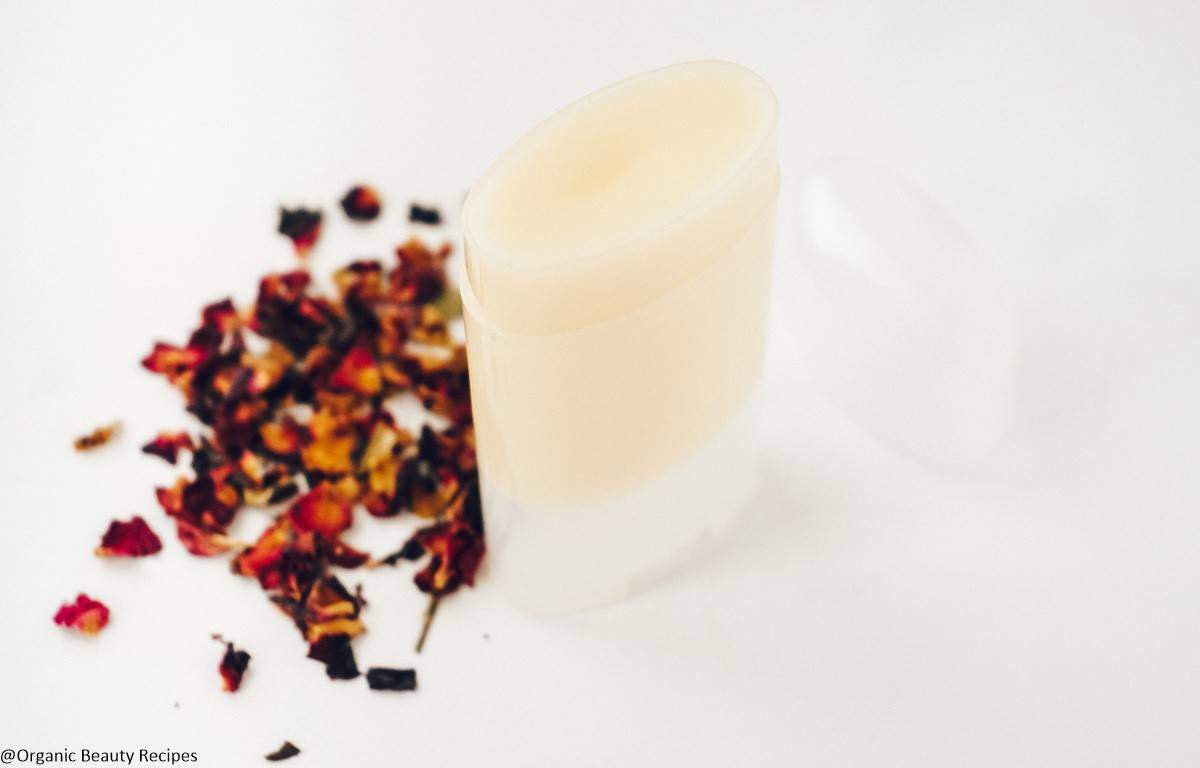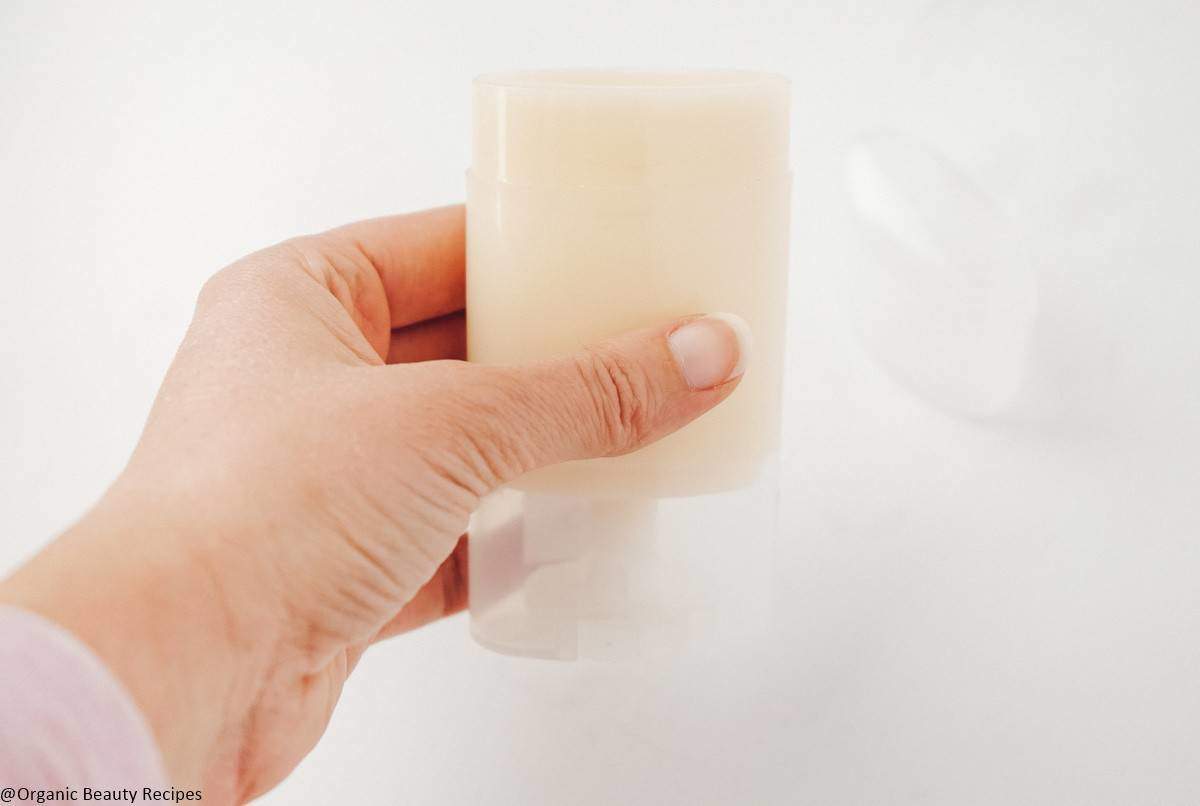Instead of relying on baking soda, which often causes skin irritation, my homemade deodorant without baking soda recipe focuses on nourishing oils like shea butter, gentle drying powders like arrowroot, and a blend of essential oils for an effective formula that will keep bacteria at bay and keep your armpit nice smelling!


Conventional deodorants have a harmful effect on our health, both from the toxic ingredients and from completely blocking one of our body’s best detoxification processes: sweat! Of course, no one wants wet, stinky pits – but by using a homemade deodorant without baking soda you get a non-irritating deodorant that prevents odor without harmful chemicals or stopping up your sweat process completely.


Baking soda is a common ingredient in most “natural” deodorants, but as I’ve mentioned, it often causes skin irritation. This is because it has a very high pH value (making it super alkaline) – if used in too high of a concentration this can cause irritation and rashes. Even if the baking soda content isn’t too high, many people are sensitive to prolonged contact with it on their skin. Few things are more uncomfortable than an irritated armpit!
Additionally, if baking powder (which contains baking soda) is used, you could still be exposing yourself to aluminum, which is often mixed with sodium bicarbonate (baking soda) to make baking powder. This is a problem because aluminum is one of the toxins commonly found in conventional deodorants and we want to avoid it!
You can find it on amazon! Here are my favorite:
75ml Empty Deodorant Containers (8-Pack); BPA-Free PP Plastic White Twist-Up Refillable Tubes
Unfortunately, aluminum is just one of the toxic chemicals we’re dealing with when we use a conventional deodorant. Here is a long (but still not all-encompassing) list of chemicals to avoid, all of which are in the popular Secret deodorant brand:
Aluminum zirconium is the active ingredient in most deodorants, which is a problem because it is a known neurotoxin. Some studies have indicated a connection between high aluminum levels and Alzheimer’s disease, and there has also been concern about a link between aluminum and breast cancer.
Cyclopentasiloxane is a chemical compound that has been linked to tumor growth, and also has high bioaccumulation, both in the human body, but also within the environment and animals via polluted water sources.
Stearyl alcohol is a known irritant to the skin.
Petrolatum is a byproduct of petroleum production and is often contaminated by harmful chemicals called polycyclic aromatic hydrocarbons (PAHs) during the refining process. These chemicals have been linked to cancer and can be stored in the body’s fats.
Phenyl Trimethicone is a silicone-derivative that has been linked to organ toxicity and may also be implicated in reproductive health issues.
Fragrance is usually a cover word for parabens and phthalates which are used to bind the scent molecules to the beauty product. These compounds mimic estrogen in the body and are considered estrogen-disruptors.
All of these compounds have been shown to have a negative effect in some studies, and most are indicated to have not been studied thoroughly enough to indicate absolutely safe long-term use by the watchdog agency SkinDeep.
Shea butter is made from the nut of the African shea tree. It is a rich nut butter that is naturally soothing to the skin, and it is also high in healing vitamin E. It’s solid texture makes it ideal as a base for a deodorant that you can spread across your skin.
Coconut oil is derived from the kernel of coconuts, and is a natural antiseptic, antifungal oil, which makes it ideal for fighting armpit odor, part of which is attributed to light bacterial growth! Because coconut oil melts on skin contact, it also helps to make this deodorant roll on smoothly.
Beeswax is harvested from the bees’ honeycomb and has a firm texture that helps to make your deodorant keep its solid form.
Arrowroot powder is a natural plant starch, usually from South America. It is highly absorbent so it works to keep your pits dry!
Lavender essential oil is made from the lavender flowers known for their soothing smell. This oil is also naturally antiseptic and has a calming effect on inflammation in the skin.
Rosewood essential oil is distilled from the Brazilian rosewood tree and has a soothing effect on the skin. It has natural antiseptic and deodorant properties.
Frankincense essential oil is made from the resin of the Boswellia sacra tree, native to Somalia and the Middle East, and has been used to boost skin health for hundreds of years due to its high antioxidant content. Best of all, it smells great!
This plastic deodorant stick container allows you to use deodorant the way you’re used to with an easy roll-on application.
Step 1
Melt beeswax, oils, and butter in a double boiler on low heat. If you do not have a double boiler, simply use an aluminum bowl placed in a pan filled with warm water.
Step 2
Add the arrowroot powder, mix well. Once melted, remove from heat, add the essential oils. Mix well.
Step 3
Pour immediately into the deodorant containers.
Step 4
Put it in the fridge for 2-3 hours until it has completely solidified.
Enjoy!
Using this natural deodorant will allow your armpits to detoxify as they adjust to not having an aluminum-based deodorant applied. This phase can last from a few weeks to two months – and its an important part of switching to a natural deodorant.
Of course, detoxification can be uncomfortable, but you can help the process along by doing clay mask detoxes – on your armpits.
Use clay (green or bentonite clay that have detoxifying properties) to detox your armpit three times a week, before you shower.
Green clay is composed of a specific amount of nourishing (and detoxifying!) vitamins and minerals. As it dries, it helps to draw out impurities from the body and skin, and it also helps to rejuvenate the skin and encourage cell turnover.
Simply mix the clay with water to form a thick paste and apply to your armpit. Let it dry and then rinse out.
This will draw out the toxins and help re-open the pores post-aluminum.
You’ll be using your homemade deodorant with ease in no time!
Improve your under-eye skin area with this DIY eye cream I made using only 3… Read More
I'll share how to make DIY Shea butter soap recipes 2 different ways: the melt… Read More
We’ve all had those moments when we’re in a hurry to head out the door… Read More
I'm sharing with you an easy version of my favorite DIY perfume creations – Firefly.… Read More
I'm sharing 3 of my favourite DIY face masks with honey, simple, easy, inexpensive and… Read More
Made without beeswax, this vegan, creamy lip butter recipe with shea butter is the stuff… Read More
View Comments
Hi, thanks for sharing! Can you tell me if you use refined Shea Butter or Raw? thanks so much!
Hi cal, I've used both and now use only unrefined shea butter, I've actually just launched my own small business with fair trade and unrefined shea butter :-)
Its excellent quality for all your DIY beauty projects, take a look here : https://www.amazon.com/dp/B08HZF6VYR/ref=cm_sw_r_tw_dp_x_IPv4Fb8V85472
Is it possible to give the measurements in grams?
I would like to know how to measure shea butter. This is my first time using shea butter..
Hi,
Could I use Beeswax or Coconut oil instead of Shea Butter? Or maybe a mix? If yes, how would the measurements change?
Thank you!
that would change the entire recipe so I am afraid not. You could replace shea butter by cocoa butter or mango butter but it will make a much harder deodorant.
Just wondering if you ever have any issues with the oils from the deodorant staining clothing? Thanks!
Hi Eve,
Thanks for posting many wonderful recipes. Will 92 degree coconut oil work well with this recipe instead of extra virgin?
I love your recipes.
I'm trying to determine unit prices for this deodorant. However, I cannot seem to calculate the drops in terms of amounts to get an accurate figure. Can you help? Thanks!